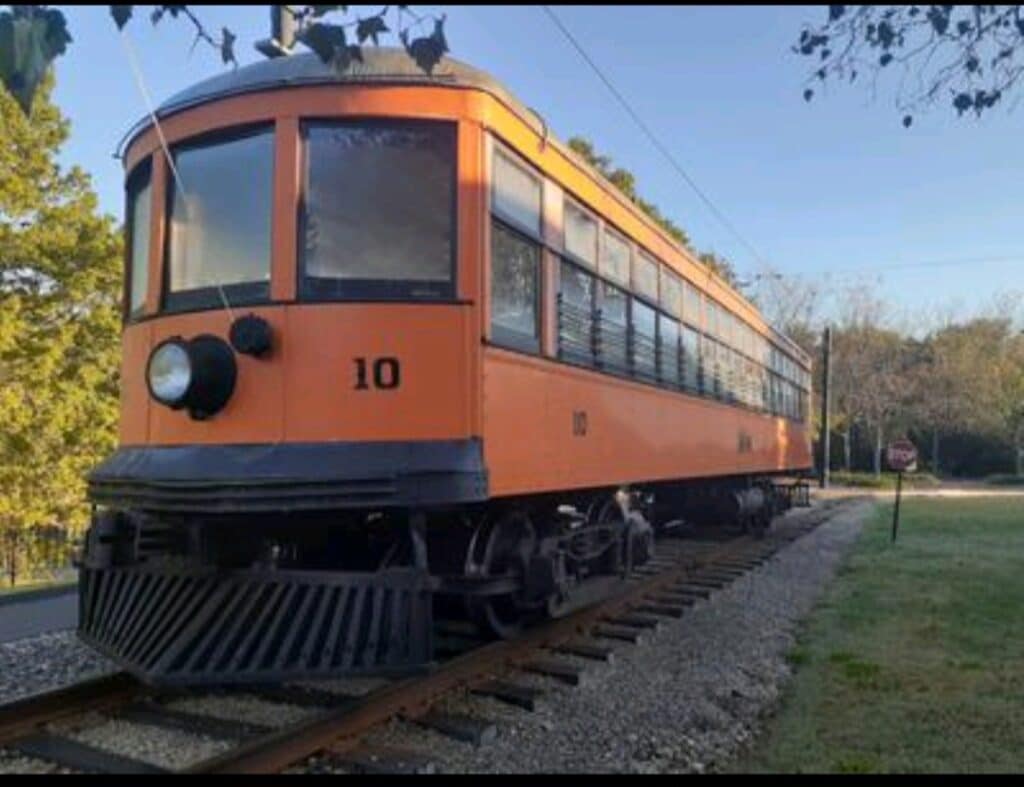The National Museum of Transportation’s Water Works Railway Car #10 at is celebrating being 110 years old in 2024!
- Line consisted of a single standard gauge track with a few sidings.
- Ran on the water conduit, parallel to Broadway and Columbia Bottoms Road (now Riverview
Boulevard.) The track terminated at the north end of the Water Works plant, just a few hundred feet
south of where the Route 66 Bridge was eventually built. - Main purpose of the line was to haul coal to the plant to fire the massive boilers.
- Construction of the Water Works plant began in 1894.
- The Chain of Rocks plant was “isolated.”
- When the Water Works Plant was built, a rail line was also built along the water conduit from an
interchange with the CB&Q Railway at Humbolt Street to the new plant. - Water Works tracks electrified in 1901.
- Small carbarn built at Baden.
- Service was scheduled to begin on September 1, 1901.
- Water Works Trolley Car #2 was the first car on the line. It was a 46 passenger, double-ended wooden trolley car.
- The car covered the four plus miles in less than fifteen minutes (at 20 mph) and ran an average of 42 and one-half miles each day. Two motormen and one conductor ran all trips seven days a week.
- Opening of the line delayed due to damage to the trolley’s engine/generator by the installation
contractor. - Line went into service on January 8, 1902.
- The Water Board extended the electrified trolley line from Baden Station south to the Bissell’s Point
plant. A single track was built from Humbolt Avenue south, adjacent to the conduit, on its east side,
across East Grand Avenue onto the grounds of the Bissell Point water works. - In 1903, a contract was let to erect line poles, string trolley wire, biond the track, and build an additional carbarn and passenger shelter at Bissell Point.
- Car #3 was delivered in May of 1904. Car #3 was double-ended, wooden car with 36 passenger
capacity. - At one point the Water Works Railway carried 140,000 Water Works employees (an average of more than 380 per day), and 27,425 other passengers.
- Water Works line was often called the Municipal Railway.
- Traffic peaked in 1916.
- The Chain of Rocks Streetcar Line operated passenger service for the last time on April 30, 1955.
Car Facts – Car #10:
BUILT: 1914.
BUILDER: St. Louis Car Company.
TYPE: Wooden with steel sheathing.
CLAIM TO FAME: Last wooden body streetcar to run in St. Louis.
DONATED TO TNMOT: 1957, along with cars #11 and 17.
Source: St. Louis Water Works Railway, by Bill Cordes.







 BACK TO ALL POSTS
BACK TO ALL POSTS


